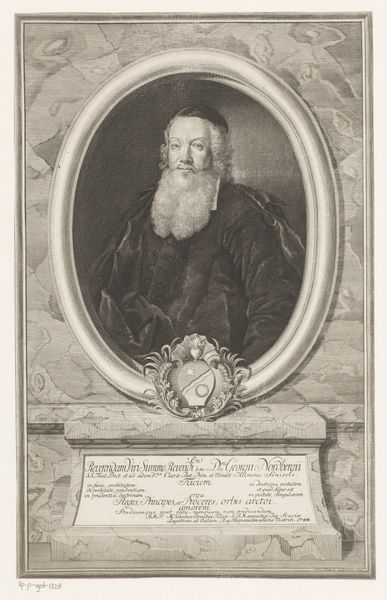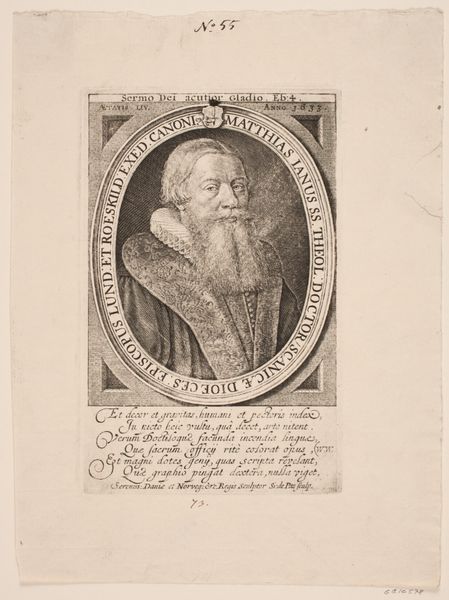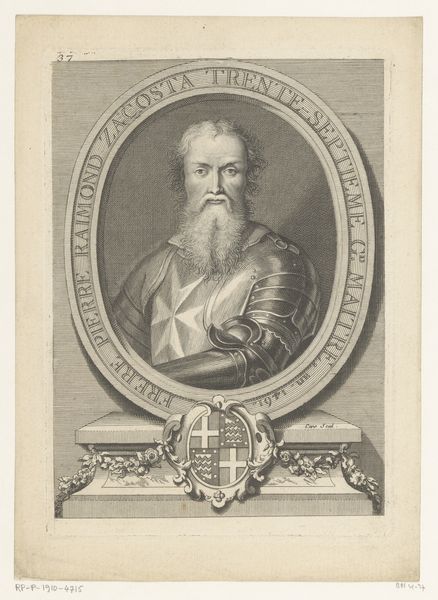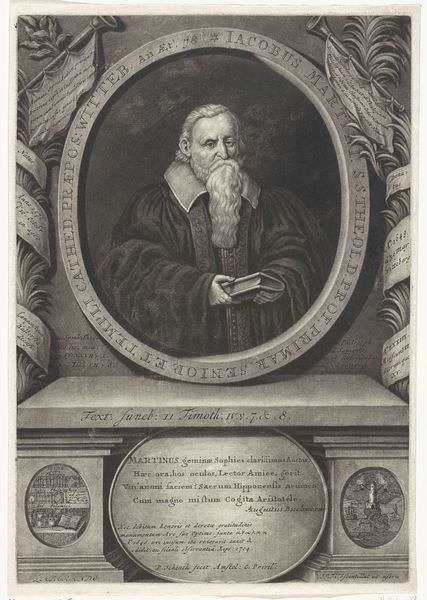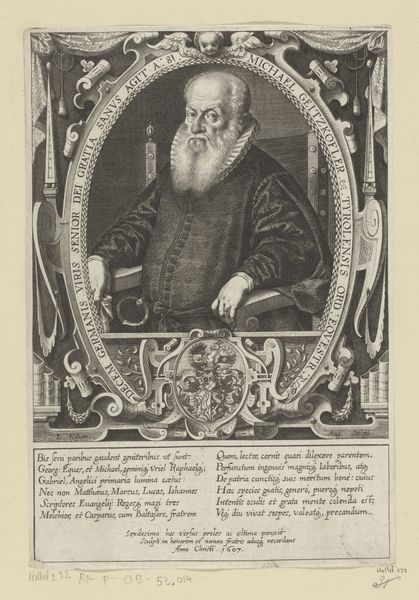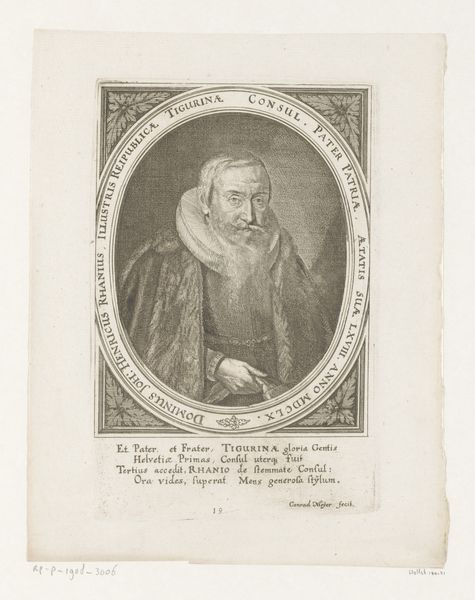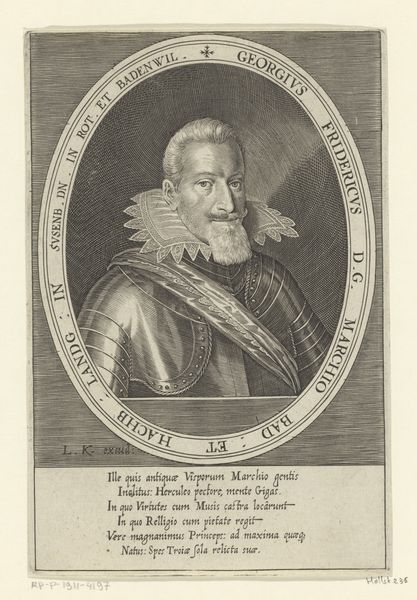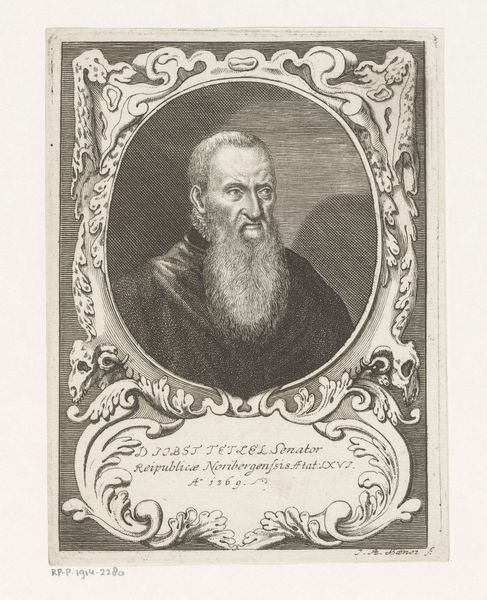
print, engraving
#
portrait
#
baroque
# print
#
history-painting
#
engraving
Dimensions: height 339 mm, width 212 mm
Copyright: Rijks Museum: Open Domain
Editor: So here we have a portrait of Jöran Andersson Nordberg from 1746. It's a print, currently held in the Rijksmuseum. Looking at the fine lines of the engraving, the detail is quite striking. What particularly stands out to you about this piece? Curator: What strikes me is the mode of production and what it signifies. Consider the engraver's labor: the meticulous process, the tools, the sheer time investment. This wasn’t just about creating an image; it was about producing a commodity, readily reproducible and circulated amongst a specific social class. Editor: So, the fact that it's a print is significant in itself? Curator: Absolutely. Think about the contrast: this image aims to represent a man of importance, a theologian. Yet, it does so through a relatively "common" medium, readily accessible to those who could afford engravings. Is this portrait meant for posterity, or for consumption within the sitter's contemporary social network? Editor: Interesting. Does the printmaking process somehow democratize the image of a powerful figure? Curator: In a way, yes. It places Nordberg’s likeness into a market. We see how materials and processes, like engraving, play a crucial role in shaping not just artistic value, but social and even political meaning. Look closely at the printed lines, the texture created, and the text. Consider the access the buyer now has. It elevates craftsmanship and material accessibility as factors influencing artistic interpretation. What do you think about this process of materialization, Editor? Editor: I hadn't considered the implications of the engraving process in such detail, really thinking about it as a commodity that gives people access and also informs their idea about the sitter! Curator: Exactly. It’s about considering the art’s existence within a broader network of production, consumption, and meaning-making.
Comments
No comments
Be the first to comment and join the conversation on the ultimate creative platform.
